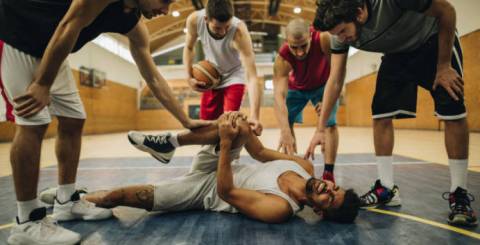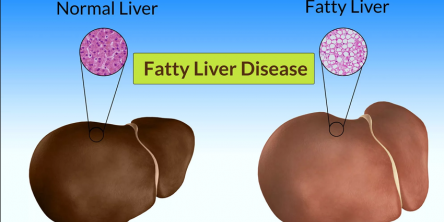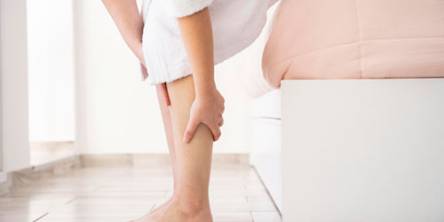Top 7 Common Basketball Injuries and Treatment Options

When it comes to the most common basketball injuries, some are widespread for players of all ages and ability levels, while others are only seen at the highest levels.
Preparation and training can lessen the likelihood of an accident occurring. Nonetheless, it's vital to remember that many sports injuries happen when you least expect them. Knowing about potential injuries ahead of time can help you prepare.
1. Ankle injuries
Ankle sprains are common among athletes and are produced when the ankle joint is rolled, twisted, or turned in a way that unduly stretches or tears soft tissue in the ankle joint.
Pain, inflammation, and even bruising are common side effects. This can impair your range of motion and keep you out of the game for several weeks if the damage is severe.
Ankle sprains, if left untreated, can progress to more serious conditions such as ankle tendonitis.
2. Achilles tendonitis
The Achilles tendon is the band of tissue that links the calf muscles to the heel bone. The Achilles tendon is constantly stretched in basketball and can develop microtears, leading to persistent inflammation and pain.
If the problem is not detected and treated, it will deteriorate, causing pain, limiting movement, and making it impossible to work at a high level.
3. Knee injuries
Basketball players ' knee joints are especially sensitive from jumper's knee, also known as Patellar Tendonitis, to ACL (anterior cruciate ligament) rupture.
A basketball knee injury can cause pain, inflammation, and joint weakening, all of which can lead to further damage if not treated.
Correct strength training, court technique, and warm-up and cool-down stretching are critical in preventing basketball knee injuries.
4. Deep thigh bruising
Physical contact between players on a crowded court is unavoidable in basketball amid the pandemonium of sprints resulting in jumps.
Deep bruising usually develops when a player's thigh collides with another player's knee or elbow with great force. Deep thigh bruising can result in discomfort, inflammation, and weakness that can last for several weeks.
5. Jammed fingers
During basketball, the fingers are virtually always at risk, from dribbling and passing to blocking and even dunking.
The joint might become stuck when the top of the finger makes contact with the ball, the rim, or another player.
This painful injury causes swelling and makes full use of the hands difficult. Preventing trapped fingers requires proper technique and awareness.
A jammed finger is not regarded as one of the worst basketball injuries, but it is one of the most common.
6. Stress fractures in the foot
When the muscles in the foot get too tired or abused to absorb the shock and stress of running, jumping, stopping, and sprinting, the bones become subject to microscopic cracks or breaks, known as fractures.
Stress fractures are frequently regarded as overuse injuries, although they can also be caused by ill-fitting or incorrect footwear, the playing surface, and returning to play too soon after an injury.
7. Muscle strains
Muscle strains, like sprains, occur when athletes stretch a specific muscle beyond its usual limit or impose an excessive weight on the muscle.
Because of the action involved in shooting, running, blocking, and passing shoulder and leg injuries are frequent in basketball. Athletes may suffer discomfort and inflammation in the strained muscle and a popping or snapping sound.
Treatment options for common basketball injuries
1. The RICE method
Rest, Ice, Compress, and Elevate. This cautious method of basketball injury treatment works well for small strains, bruising, and general muscle or bone concerns. It is most effective when administered within the first few days after an accident.
2. Taping and strapping
Taping and strapping can help support areas such as the elbows and knees, and the increased tension can alleviate muscular and soft-tissue stress.
Some players tape injury-prone areas before playing or training out to prevent injuries from occurring. This can assist players in continuing to train or play games.
3. EPAT therapy
EPAT Therapy is a noninvasive, painless way to hasten the healing process of several common basketball injuries. It increases blood flow and decreases inflammation in the affected area by using impulse pressure waves sent deep into muscles and tissue.
This sort of treatment, known as Shockwave Therapy, is employed by many college and professional basketball teams and trainers.
4. Nonsteroidal anti-inflammatory medications
Nonsteroidal anti-inflammatory drugs, such as ibuprofen, help relieve pain and reduce inflammation. These are non-prescription, over-the-counter drugs that are safe to use and do not require a prescription.
5. Physical therapy
Physical therapy can be an effective technique to strengthen the affected area and aid in rehabilitation for the majority of frequent basketball injuries, even minor ones. It is sometimes used in conjunction with other therapeutic approaches, such as EPAT Therapy, to expedite recovery and healing.
6. Surgery
Many of the frequent basketball injuries described below do not necessitate surgery. It is often reserved for the most severe basketball injuries, such as certain types of knee or ankle injuries. If the ailment is not too significant, professional athletes will opt for off-season surgery whenever possible.
Similar Articles
We often experience small discomforts or symptoms that seem insignificant, like headaches, fatigue, or brittle nails. Many times, we brush them off, thinking they’ll go away on their own. However, these minor issues might be your body’s way of telling you that something more serious is going on.
According to the World Health Organization (WHO), half to three-quarters of adult persons globally experienced a headache in the past year. Unfortunately, tension headaches are one of the most prevalent symptoms you can have. Furthermore, some tension headaches resemble migraine headaches, making matters worse.
The review of Yakrit Plihantak Churna is going to be amazing. You will know the facts, does it works along its benefits. The liver is the main engine of the body. It is the second largest gland in the body.
A podiatrist is a doctor who focuses on treating foot and ankle ailments. If you have specific medical issues, you may need to see a podiatrist for therapy that your primary doctor cannot offer. Don't overlook pain in your lower leg, foot, ankle, or toes.
A podiatrist is a medical expert who focuses on foot and ankle care. There are various reasons you may need to see one.
Swelling is a common issue that can strike anyone. Occasional leg swelling may occur after a long day on your feet or from sitting too long. However, if your legs are regularly swollen, it could indicate a serious underlying condition. Swelling can cause leg pain, loss of sensation, redness, and itching. If left unmanaged, it can lead to stiffness and difficulty walking.
Choosing the best aesthetic medicine courses will significantly boost your career. Medical professionals looking to expand their practice and stay ahead in the field of aesthetic medicine will find these training programs invaluable
Lower back pain is like a storm gathering over the horizon all day. The dull discomfort, the throbbing feeling, and the stiffness all add up until, like a thunderclap, it explodes into full-fledged pain. It penetrates your whole body, removing choice and control. Your mobility is restricted, making daily tasks difficult, and if not addressed, it can cause permanent damage.
Even though migraine affects over one billion people around the world, it has long been neglected as one of the most devastating diseases on the planet. Migraine headaches are a neurological disorder characterized by recurrent pounding or throbbing headaches, nausea and vomiting, and sensitivity to light, sound, and strong odors









